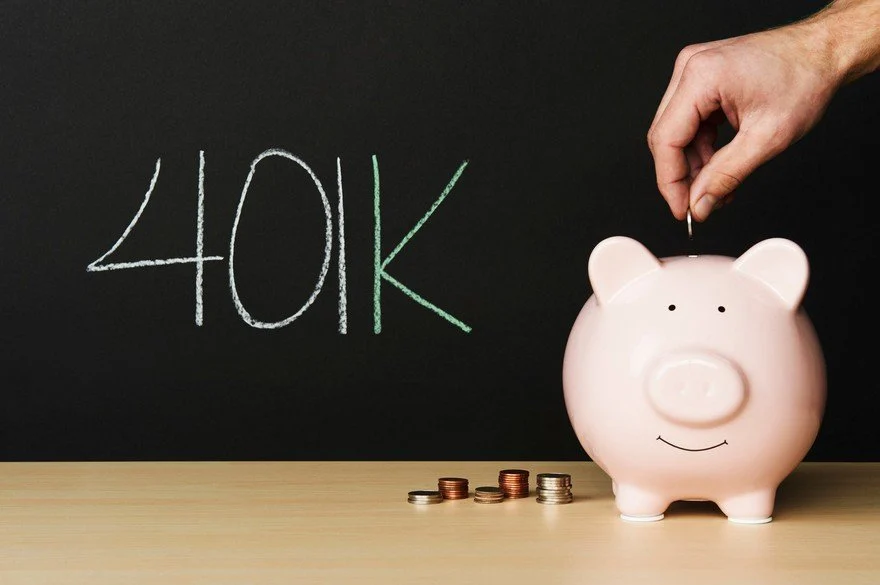Hitting your retirement savings goals is all but impossible unless you invest your money via a tax-advantaged account like a 401(k). These savings vehicles are often offered by employers, and as of 2023, you can contribute up to $22,500 in pretax earnings each year ($30,000 if you’re age 50 or older).
So how is the average American faring when it comes to funding their 401(k) plans? Let’s take a look at the typical 401(k) balance, plus some tips for increasing that amount.
Average 401(k) Balance by Age
Investment firm Vanguard analyzed data from about 5 million retirement accounts as part of its How America Saves report. According to the latest findings, the average 401(k) balance was $141,542 in 2021. That’s an increase of about 10% from 2020.
As you might imagine, the average balance varies quite a bit according to age, with older workers amassing larger portfolios. In the table below, you can see the average and median balances for people in different age groups.
| Age | Average 401(k) Balance | Median 401(k) Balance |
| Younger than 25 | $6,264 | $1,786 |
| 25 to 34 | $37,211 | $14,068 |
| 35 to 44 | $97,020 | $36,117 |
| 45 to 54 | $179,200 | $61,530 |
| 55 to 64 | $256,244 | $89,716 |
| 65 and older | $279,997 | $87,725 |
If we look closer at these numbers, it becomes apparent that many workers may not have enough money saved in their 401(k) plans — especially when we consider the median balance, which prevents any outliers from skewing the data.
Fidelity Investments recommends that you have about 10 times your salary saved by age 67. So for someone who earns $80,000 per year, they should have a portfolio worth $800,000 at age 67 to retire comfortably.
Of course, it’s possible that many savers have money in other places as well, such as IRAs, taxable brokerage accounts and savings accounts. Still, the typical 401(k) balance seems dangerously far off from the recommended retirement savings target.
Ways To Grow Your 401(k)
Whether you’re new to the workforce or a seasoned investor, there are steps you can take to ensure your 401(k) balance grows to its fullest potential.
Start ASAP
To grow a substantial retirement portfolio, it’s essential to start early and be consistent with your contributions, according to Andrew Latham, a certified financial planner and the director of content of SuperMoney.com. “Even small, regular contributions can compound over time and make a significant difference in your retirement savings,” he said. For example, saving $200 a month for 30 years could grow into a roughly $227,000 retirement fund, assuming an average annual return of 7%.
Diversify Your Investments
Latham said that diversification is key when it comes to investing in your 401(k). While your investment choices may be somewhat limited according to the plan provider, you should aim to invest across various asset classes, including mutual funds and ETFs, to minimize risk and maximize growth potential. If you aren’t sure how to go about picking your own investments, many plan providers offer free help from a financial advisor.
Watch Out for Fees
“High fees can eat into your returns, so be sure to compare and choose low-cost investment options,” Latham said. To illustrate, he explained, imagine you invest $10,000 in two different retirement funds, one with an expense ratio of 0.5% and another with 1.5%. After 30 years, assuming a 6% annual return, the fund with the lower expense ratio would be worth around $49,840, while the one with the higher expense ratio would only be worth approximately $37,450 — a difference of $12,390 on a $10,000 investment.
Take Advantage of Matching
As an added employee incentive, some employers will match a portion of retirement contributions. For example, your employer might match 50 cents for every dollar you contribute, up to 6% of your salary. So be sure to contribute at least 6% of your salary to take advantage of the full match, Latham said. That’s free money that you don’t want to leave on the table.
What If I Don’t Have a 401(k)?
It’s important to note that not all Americans have access to a 401(k). According to data from the Census Bureau, as few as 14% of employers offer one. Even so, 79% of Americans work for an employer that sponsors a 401(k)-style retirement plan. That’s because big companies that employ high numbers of workers are the most likely to sponsor retirement plans.
If you don’t have access to a 401(k), Latham noted that you can still save for retirement through an individual retirement account (IRA). Like a 401(k), an IRA also comes with special tax benefits that can help you save and earn more. “There are different types of IRAs to choose from, so do your research and pick one that aligns with your retirement goals and risk tolerance,” Latham said.
Another way to save for retirement if you don’t have access to a 401(k) is to invest in a taxable brokerage account. “While you won’t receive any tax benefits like you would with a 401(k) or IRA, you can still invest in low-cost index funds, access your savings whenever you want without penalty, and still benefit from long-term compounding,” Latham said.
Regardless of how you save for retirement, Latham emphasized the importance of regularly reviewing and adjusting your retirement savings strategy as your life circumstances change. “Factors like marriage, children and career changes can impact your retirement goals and require adjustments to your savings plan,” he said.

